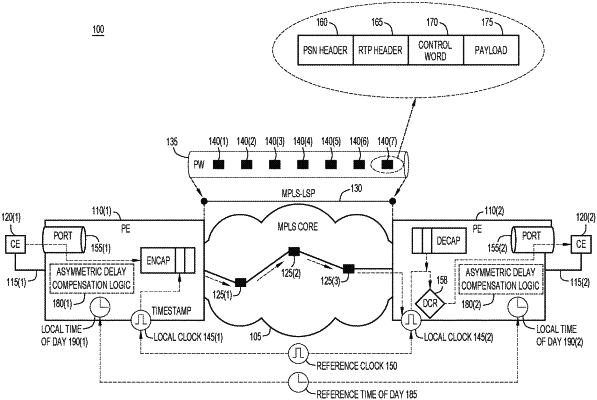| CPC H04L 43/0852 (2013.01) [H04L 47/56 (2013.01)] | 20 Claims |

|
1. A method comprising:
providing a first network communication to a first network node from a second network node, wherein the first network node and the second network node are separated from one another by a switched path network;
obtaining, from the first network node, a second network communication including an indication of a propagation delay from the second network node to the first network node that was calculated based on a time during which the first network communication was processed by the first network node and a time during which the first network communication was processed by the second network node;
calculating a propagation delay from the first network node to the second network node based on a time during which the second network communication was processed by the first network node and a time during which the second network communication was processed by the second network node;
determining that the propagation delay from the first network node to the second network node is less than the propagation delay from the second network node to the first network node;
delaying the second network communication in an egress buffer of the second network node for an amount of time substantially equal to a difference between the propagation delay from the first network node to the second network node, and the propagation delay from the second network node to the first network node;
providing a third network communication to the first network node from the second network node;
obtaining, from the first network node, a fourth network communication including an indication of an updated propagation delay from the second network node to the first network node that was calculated based on a time during which the third network communication was processed by the first network node and a time during which the third network communication was processed by the second network node;
calculating an updated propagation delay from the first network node to the second network node based on a time during which the fourth network communication was processed by the first network node and a time during which the fourth network communication was processed by the second network node;
determining that the updated propagation delay from the first network node to the second network node is less than the updated propagation delay from the second network node to the first network node; and
delaying the fourth network communication in an egress buffer of the second network node for an amount of time substantially equal to a difference between the updated propagation delay from the first network node to the second network node, and the updated propagation delay from the second network node to the first network node.
|